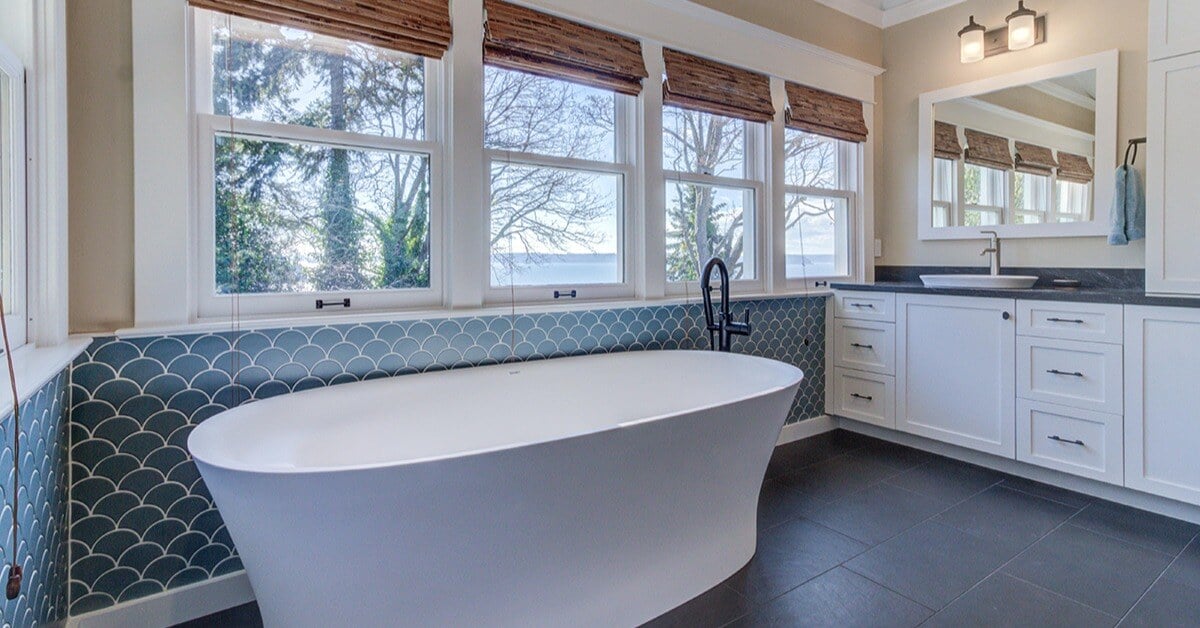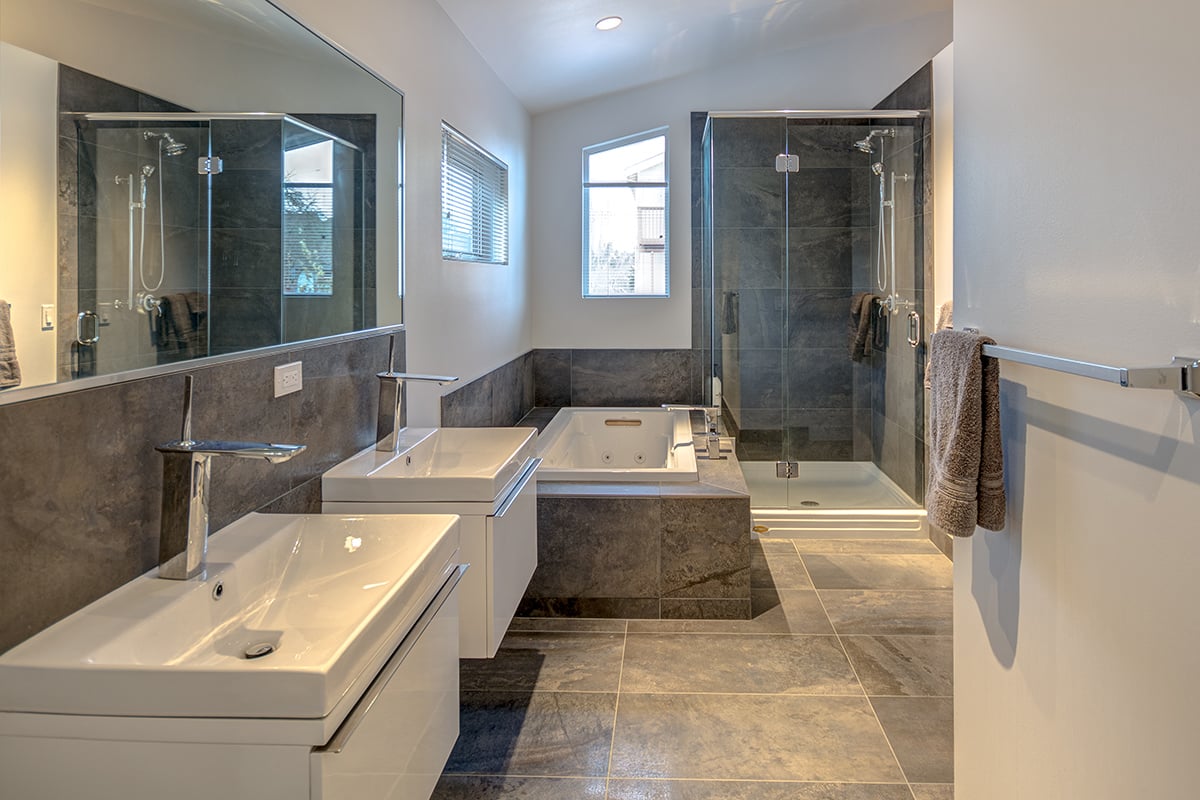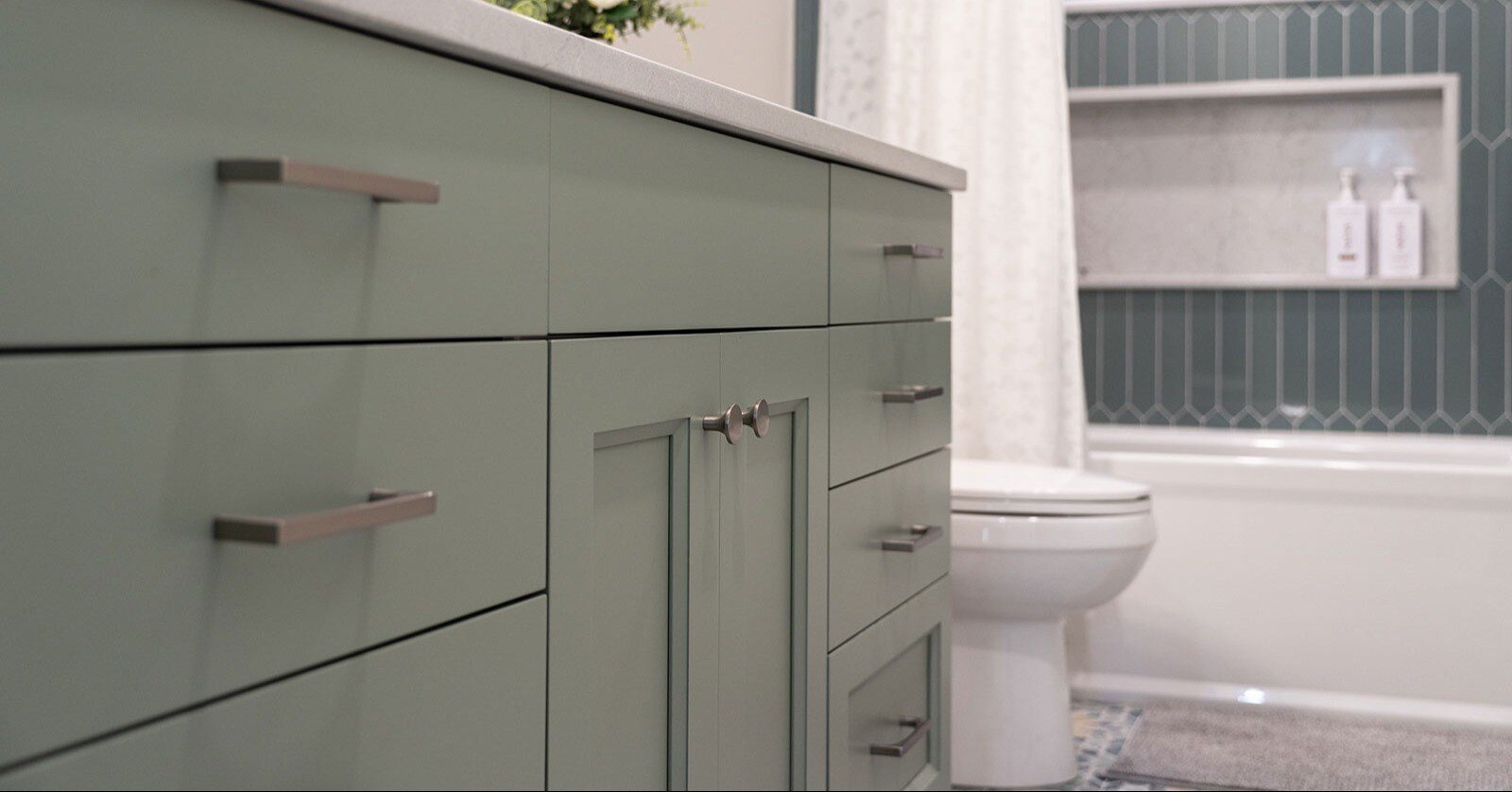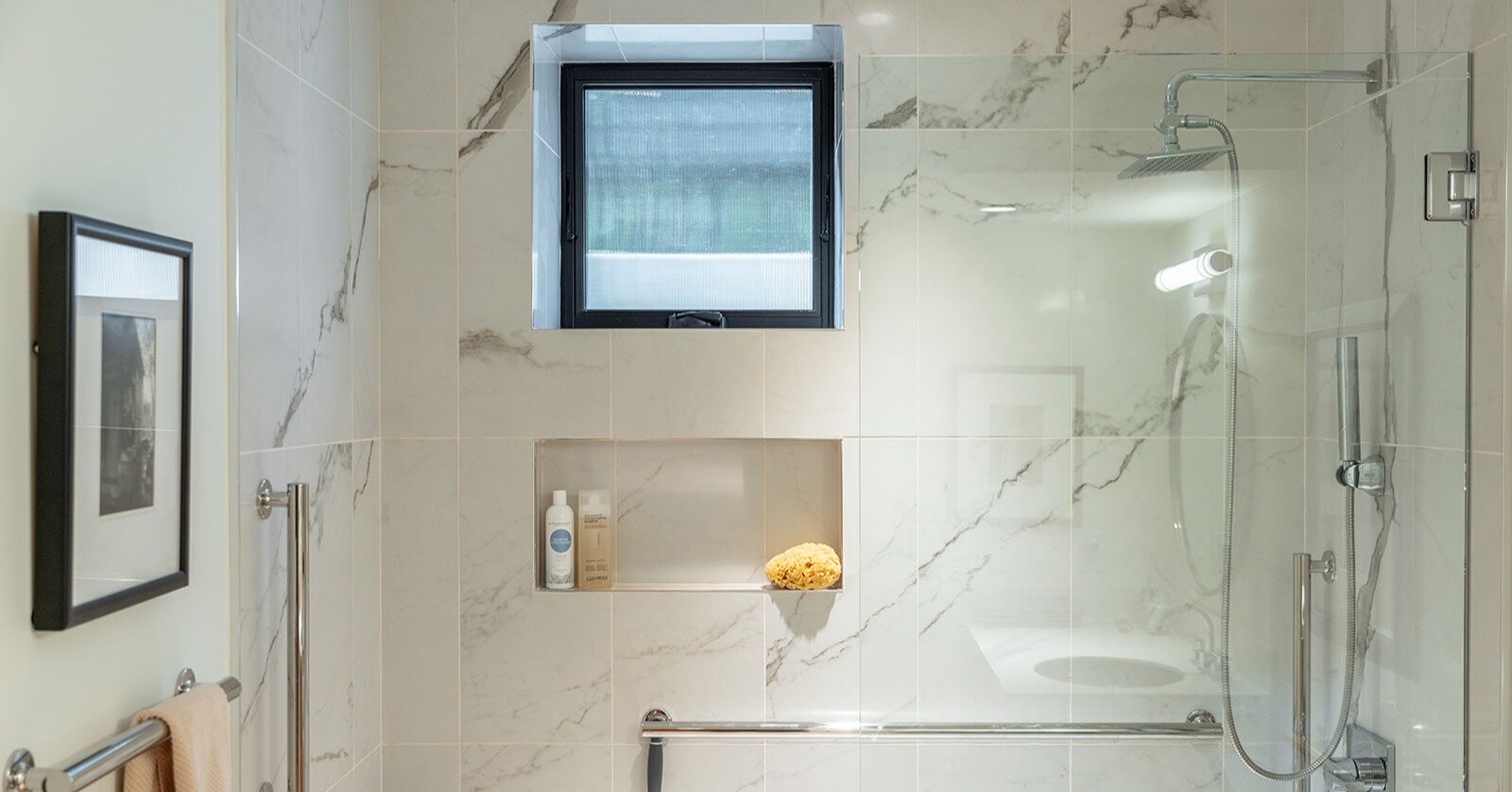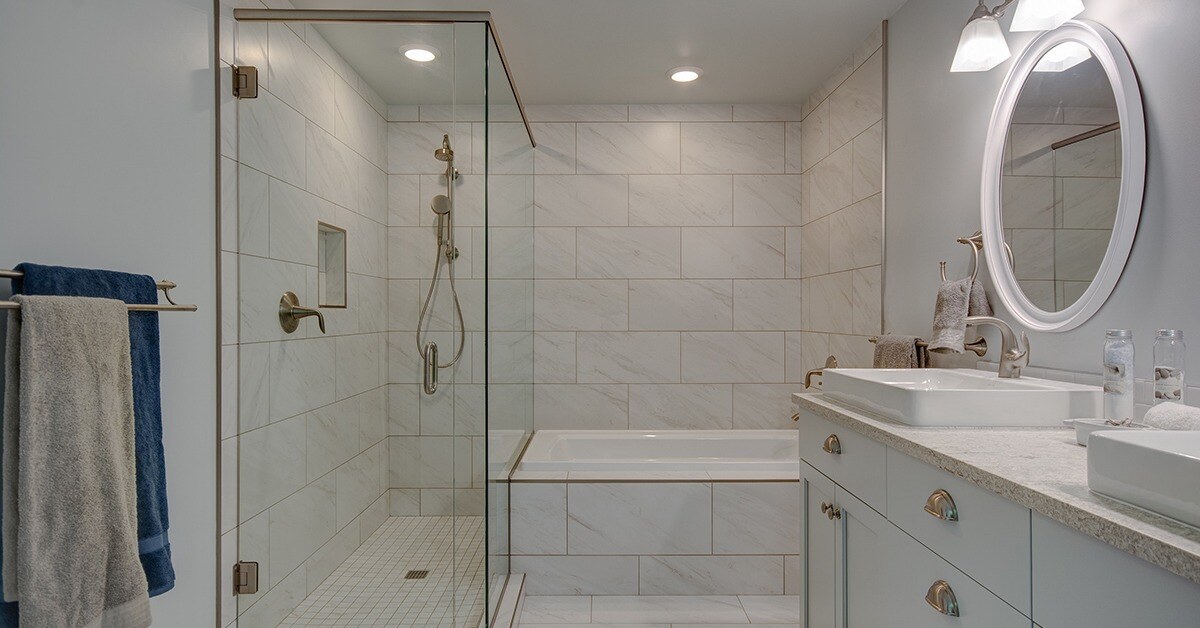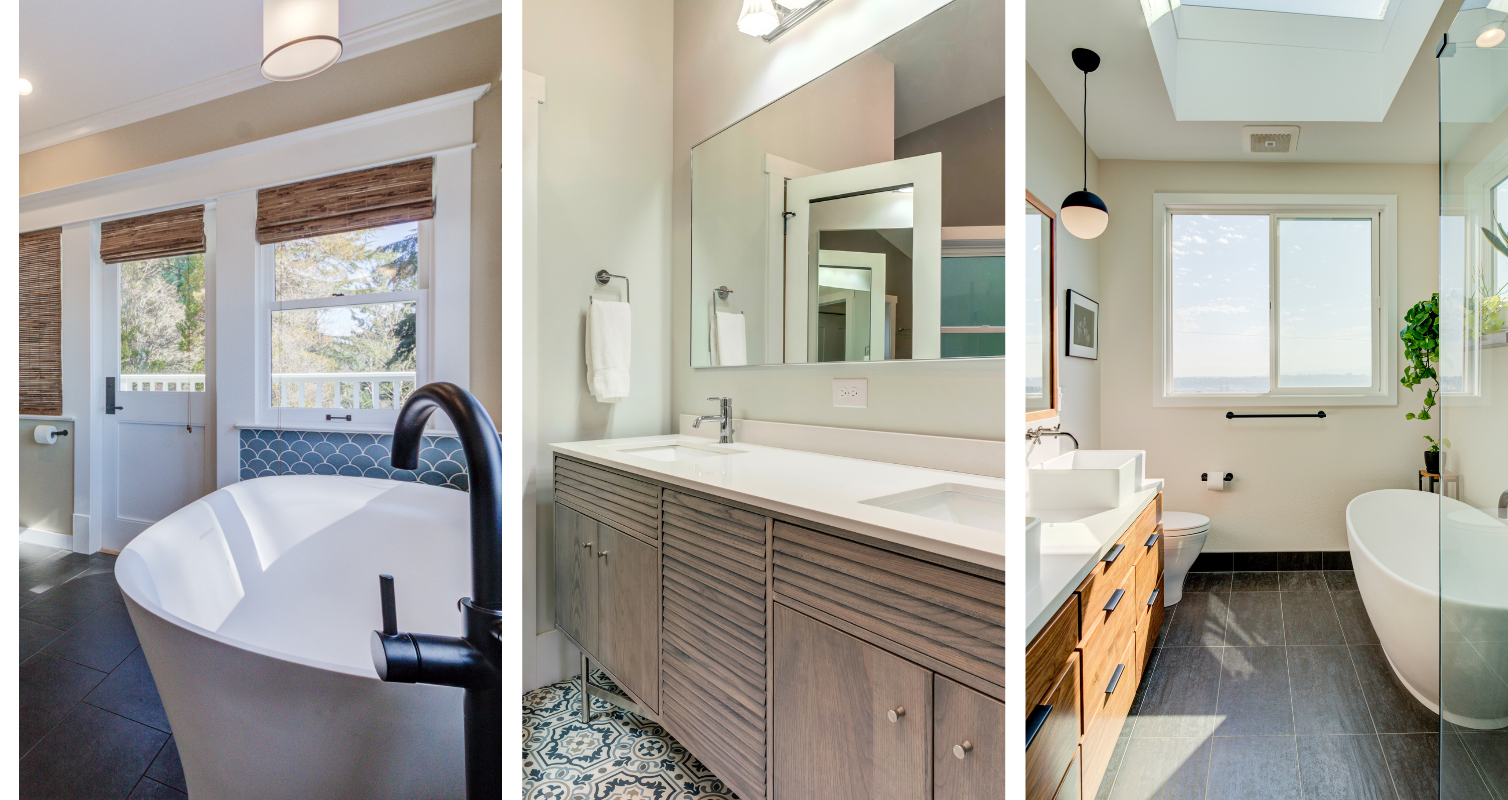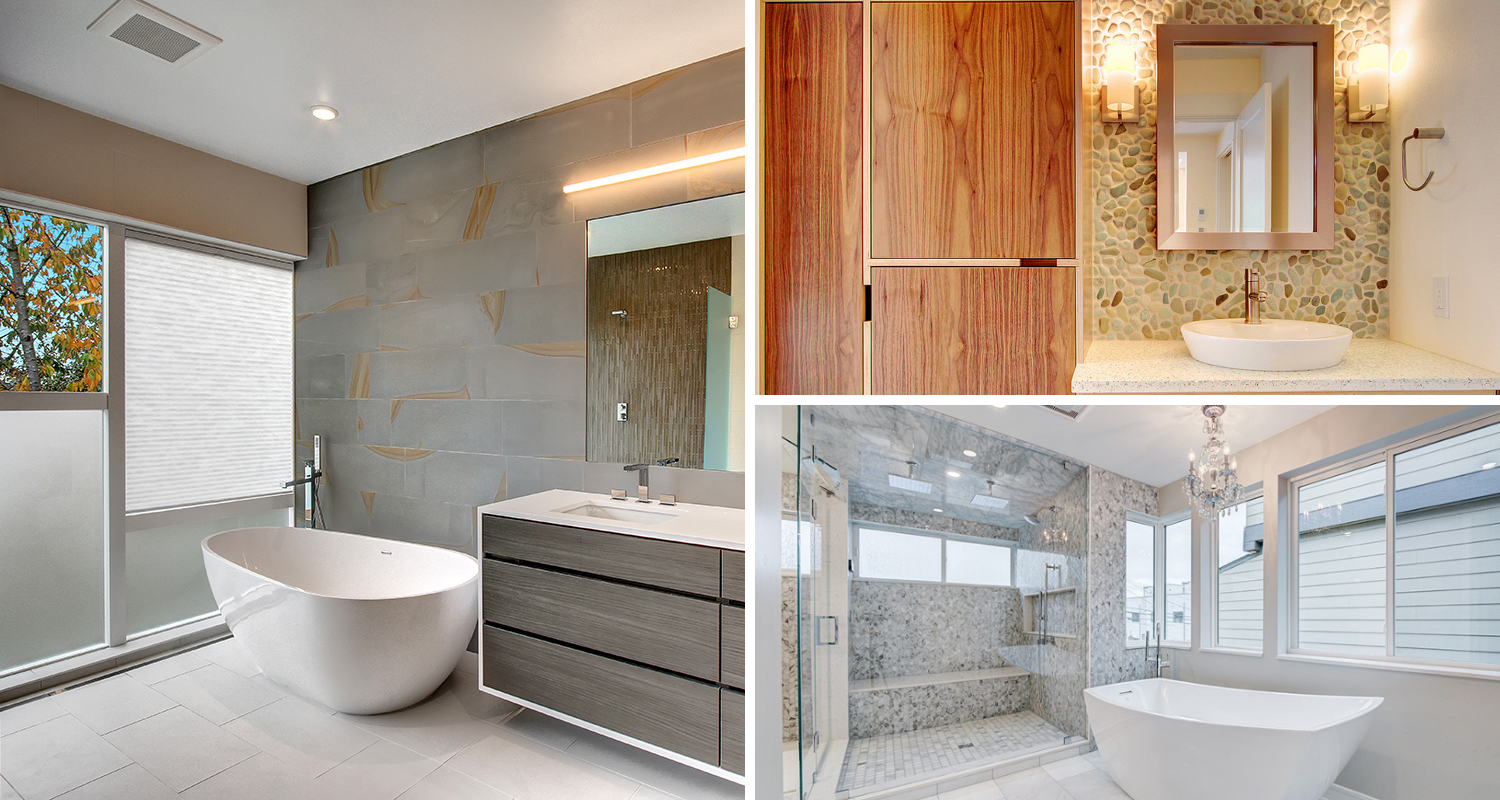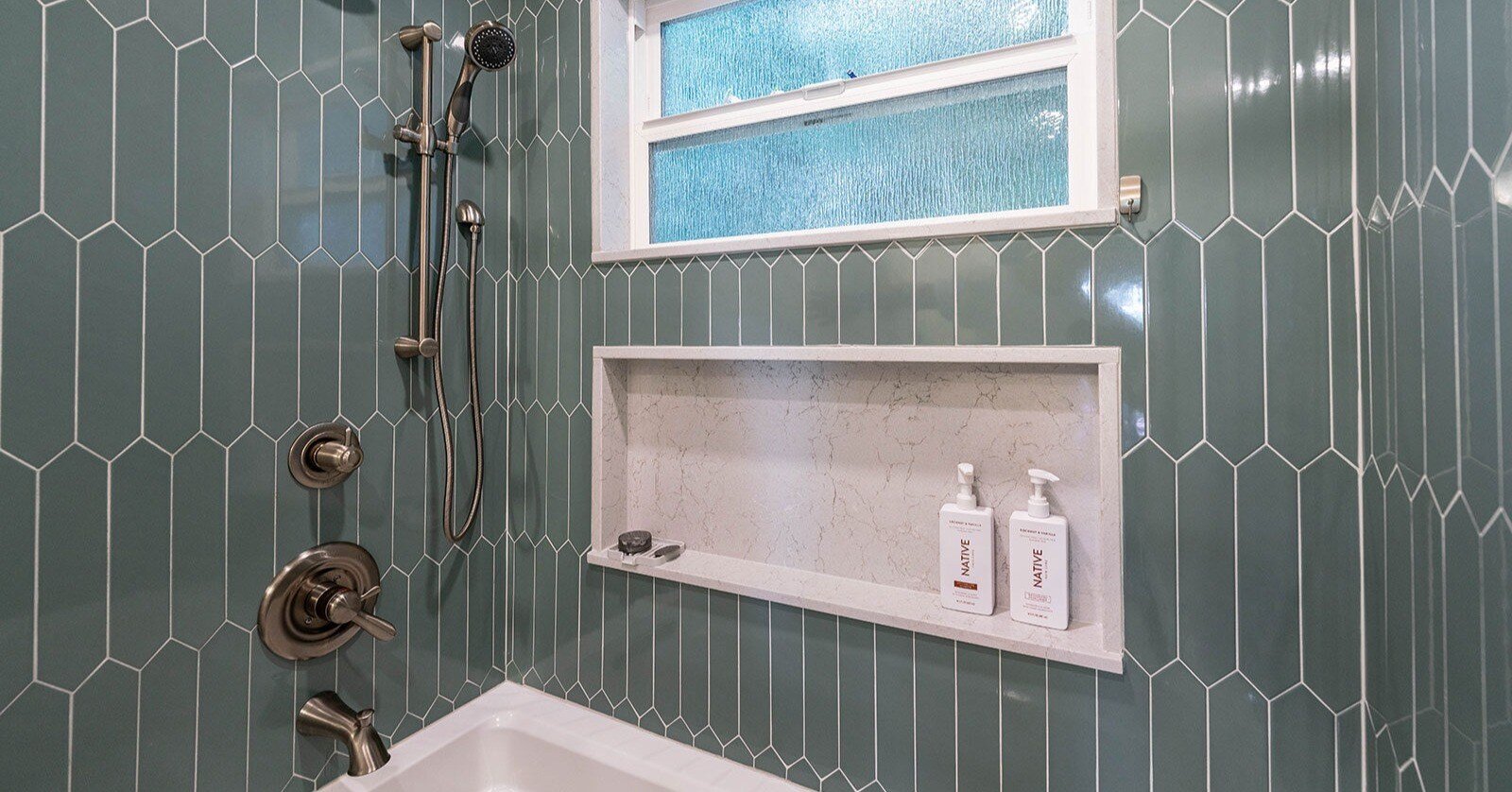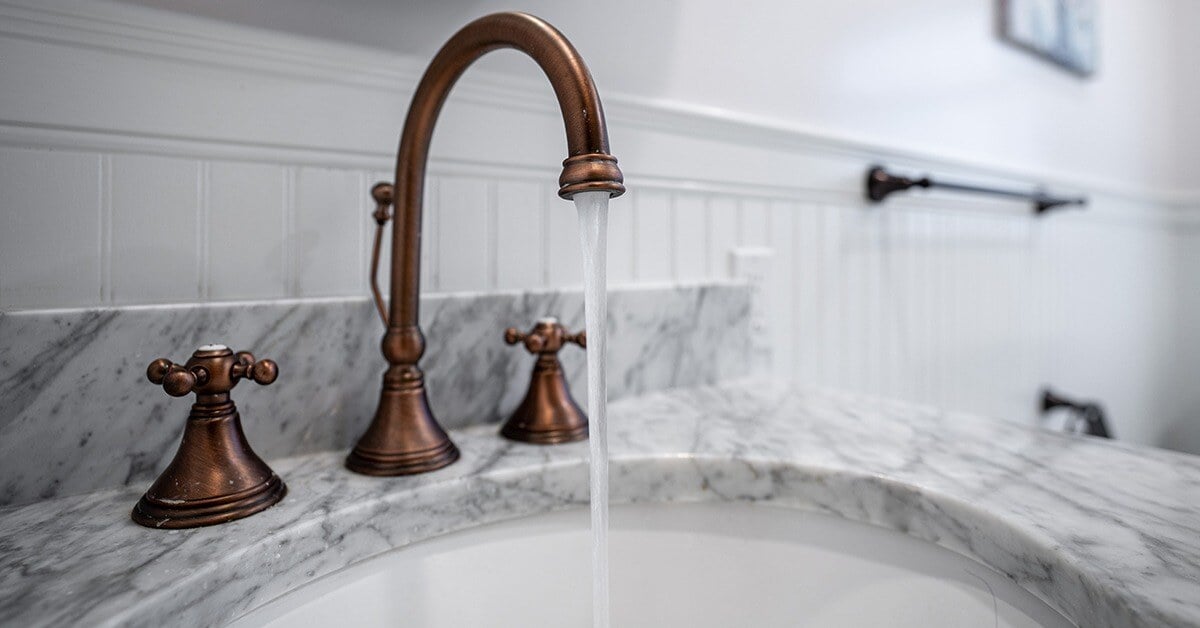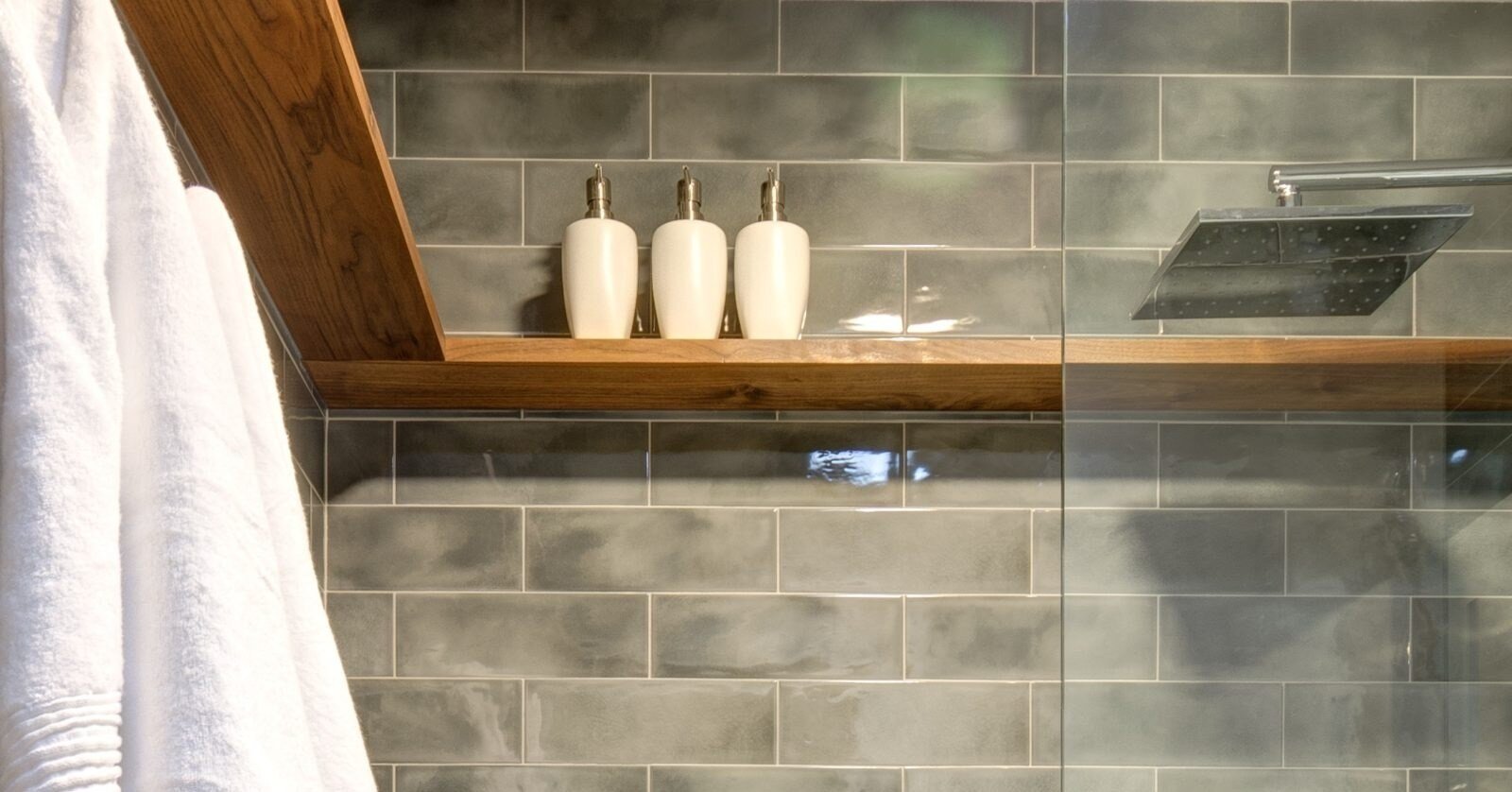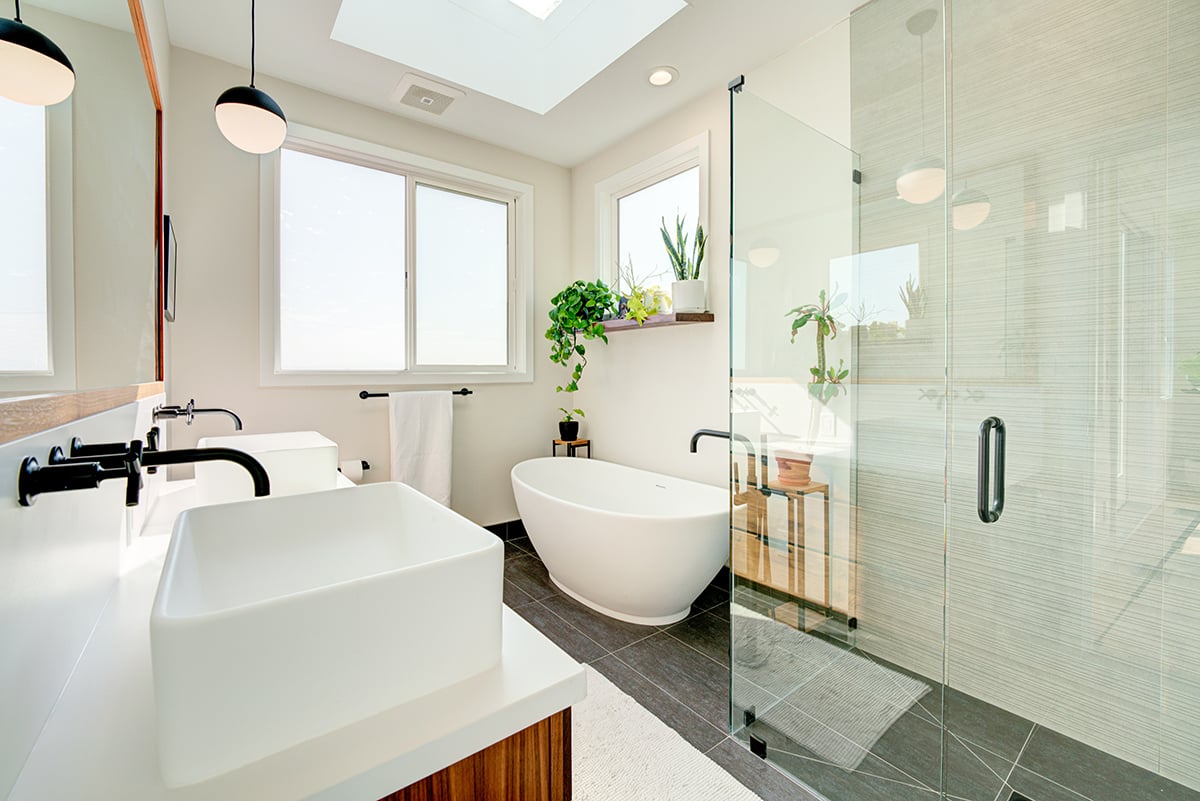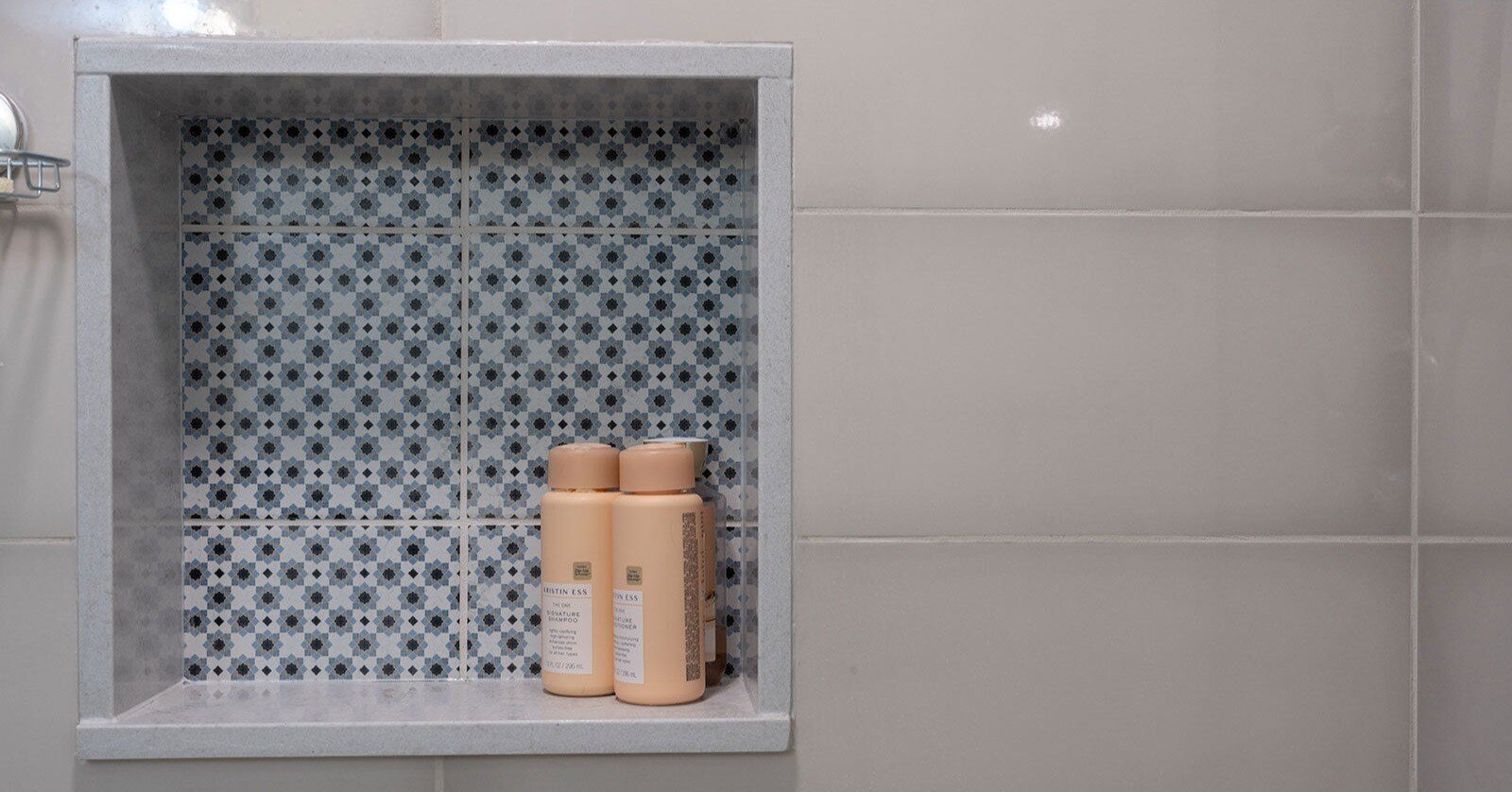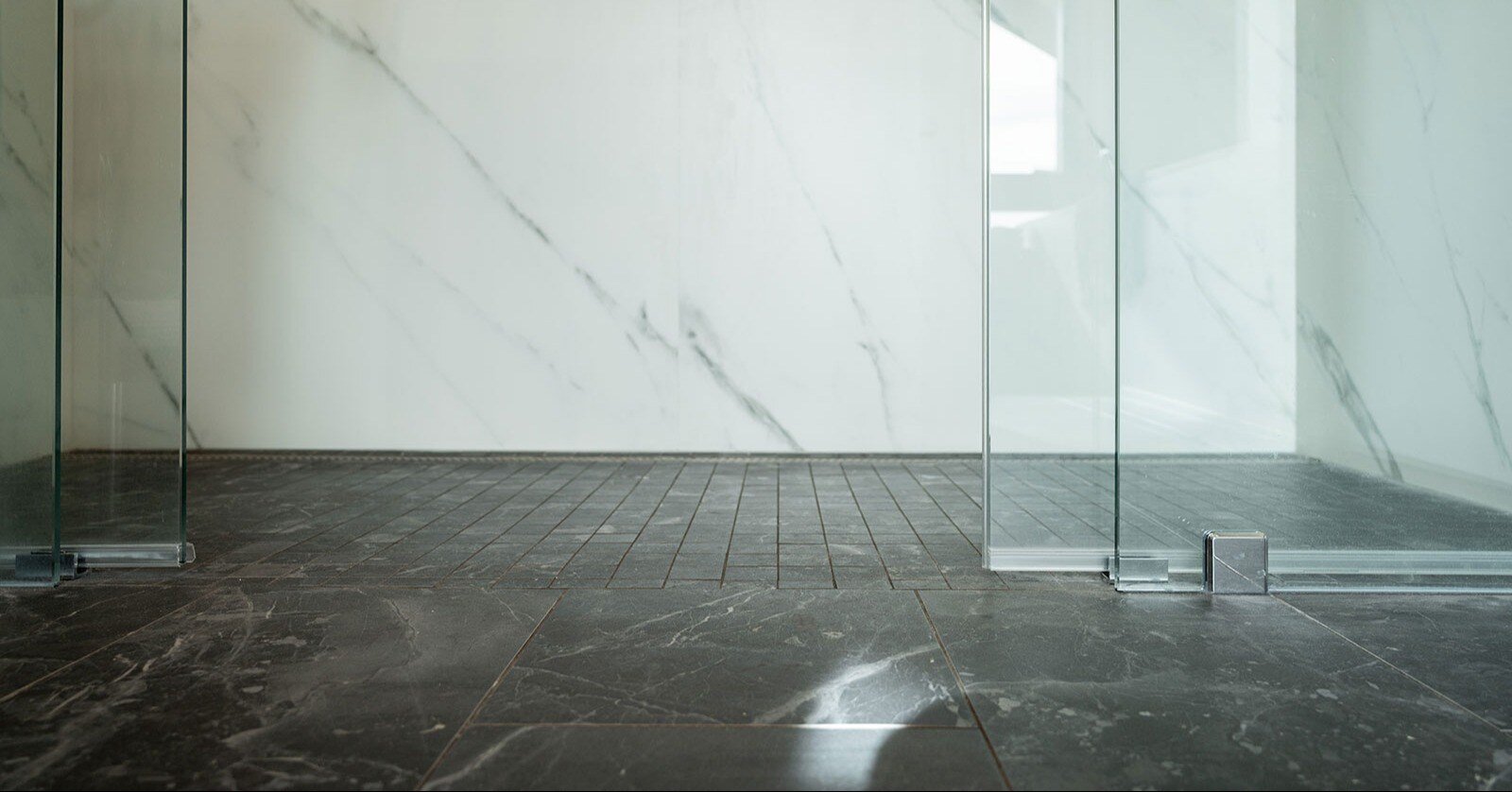Are you looking for low-maintenance, high-quality, and aesthetically pleasing bathroom products? In our 40 years of remodeling bathrooms, we’ve found that homeowners often prioritize aesthetics over functionality. However, with the evolution of materials, there are now manufactured stone and grout products that can simulate the look and feel of natural materials without the high maintenance upkeep requirements.
Choosing materials designed for bathroom environments is crucial when planning a bathroom renovation. Here are a few key considerations when planning your lower-maintenance dream bathroom.
1. Ventilation
Proper ventilation is essential for protecting the materials in your bathroom and ensuring a healthy environment. An outdated or improperly installed bathroom exhaust fan can cause moisture to build up in the bathroom. Often, these fans are mistakenly vented into the attic instead of directly outside, leading to moisture accumulation in the attic and potentially causing damage. If that moisture is misdirected for too long, it could lead to catastrophic issues in your bathroom and potential structural damage to other parts of the home. This trapped moisture can cause mold and mildew, which can damage materials and pose health risks.
Here’s what you need to consider for adequate bathroom ventilation:
-
Ensure the exhaust fan vents outside, away from doors and windows.
-
Choose a fan appropriately sized for your bathroom (measured in cubic feet per minute, or CFM). An incorrectly sized exhaust fan won't effectively remove moisture and odors.
-
Install a flapper where the vent meets the exterior to prevent insects, rodents, and birds from nesting. If the vent gets clogged, it won’t function properly.
-
Perform annual maintenance to remove lint and dust, ensuring optimal performance.
-
Consider modern exhaust fans with moisture sensors to automatically turn the fan on and off or timers for automatic operation and energy efficiency. You can also find fans with lights, heaters, etc., at varying noise levels. But ventilation capabilities are always the most important.
2. Flooring
Selecting the right flooring is vital for style, durability, and ease of cleaning. Large format tiles reduce grout lines, while sheet goods eliminate grout altogether.
Recommended options and considerations include:
-
Marmoleum: These linseed oil-based products are high-quality and durable. Marmoleum installation requires more effort and time because the seams might need to be heat-welded to create a waterproof seal. This eliminates the issue of water seeping under the material, making the extra installation time worthwhile.
-
Vinyl: This type of sheet-good material is durable and is often installed by gluing it into place, often in one piece (depending on the size of the room.)
-
Porcelain or Ceramic Floor Tiles: These bathroom flooring materials are excellent for durability and easy maintenance. Avoid natural stone, as it can absorb moisture and odors due to its porosity, making it difficult to clean.
-
Hardwood: While possibly suitable for powder rooms, hardwood is not recommended for bathrooms with showers or tubs due to regular moisture exposure.
When choosing flooring, balance the benefits of smooth surfaces for easy cleaning with the need for some texture in your materials and necessary grout lines to enhance traction and prevent slipping.
3. Grout
Your choice of grout material also significantly impacts maintenance. Organic-based grout is porous and requires regular sealing to prevent moisture, odor absorption, and grime build-up. Organic grout is also more prone to cracking and separating in areas with a lot of movement. In contrast, epoxy grout is more flexible and moisture-resistant, requiring minimal maintenance.
Ensure grout remains intact, especially in areas prone to movement. The location (e.g., floor or wall) and size of the bathroom tile you’re installing will also influence your product selection.
4. Wall-Mounted Fixtures & Bathing Enclosures
Wall-mounted fixtures can add a sleek, modern design style and simplify cleaning by reducing nooks and crannies that commonly trap dirt and debris. When making fixture selections, consider:
-
Wall-hung vanities, toilets, and faucets minimize crevices where dirt and moisture accumulate, making cleaning easier.
-
Shower doors: Frameless, semi-frameless, and walk-in shower enclosures offer a more straightforward cleaning experience. Choose custom glass doors with minimal track profiles to reduce those hard-to-clean nooks. To make cleaning more manageable, choose a coated glass treatment that repels water marks, soap scum, and streaking.
-
Open-concept wet room showers: This bathroom design eliminates the need for shower doors altogether. It is critical to plan for proper drainage to manage water flow properly.
5. Wall Tiles
Like flooring, large tiles or sheet goods for walls can reduce grout joints, easing maintenance and cleaning. This is not the kind of DIY project to take on unless you have extensive experience. Before installation, proper wall preparation and waterproofing are crucial for all wall finishes to ensure longevity and prevent water damage.
6. Custom-Designed Bathroom Storage
Tailor your storage solutions to your bathroom’s usage. For shared family bathrooms, consider how multiple people will need to function in the space simultaneously.
To increase storage and ease of use, design the space with built-in outlets in drawers, bath toy storage for young kids, and double bathroom vanities. Creative linen storage can also enhance functionality.
Consulting with a design professional can help optimize storage based on your bathroom’s size and layout.

Functional & Luxurious Bathroom Features To Consider
-
Paint: It’s critical to select paint with the right finish for use in a moist space. For durability and ease of cleaning, use paint with a slight sheen rather than a matte finish.
-
Baseboards: Consider ceramic tile baseboards instead of wood trim.
-
Multi-Functional Mirrors: Consider simple yet luxurious upgrades like heated mirrors that prevent fogging.
-
Heating Solutions: Opt for heated floors for a cozy experience and to help wet areas or shower areas dry faster. Heated towel racks enhance comfort, extend the life of linens with quicker drying, and help reduce overall moisture in the bathroom.
-
Countertops: Quartz and granite are ideal materials for bathroom countertops. Avoid natural stones like marble, soapstone, or paper stone due to their porosity.
-
Sinks: Under-mount sinks offer a seamless look and make for far easier cleaning with fewer caulk lines to gather gunk.
Design for Durability and Ease of Cleaning
You’re leading a busy life; the last thing you need is to spend more time and effort keeping your home in tip-top shape. Choosing suitable materials and the design layout for your bathroom remodel involves carefully balancing aesthetics and functionality.
Ensure you work with a trusted design-build firm that asks the right questions to help you create a space that meets your needs and enhances your daily life. With the right material and design choices, you can achieve a beautiful, low-maintenance bathroom.
Transform your bathroom with the comprehensive eBook "The Complete Guide to Creating a Dream Bathroom: From Outdated to Oasis." Discover essential insights and inspiration for your upcoming renovation project.

